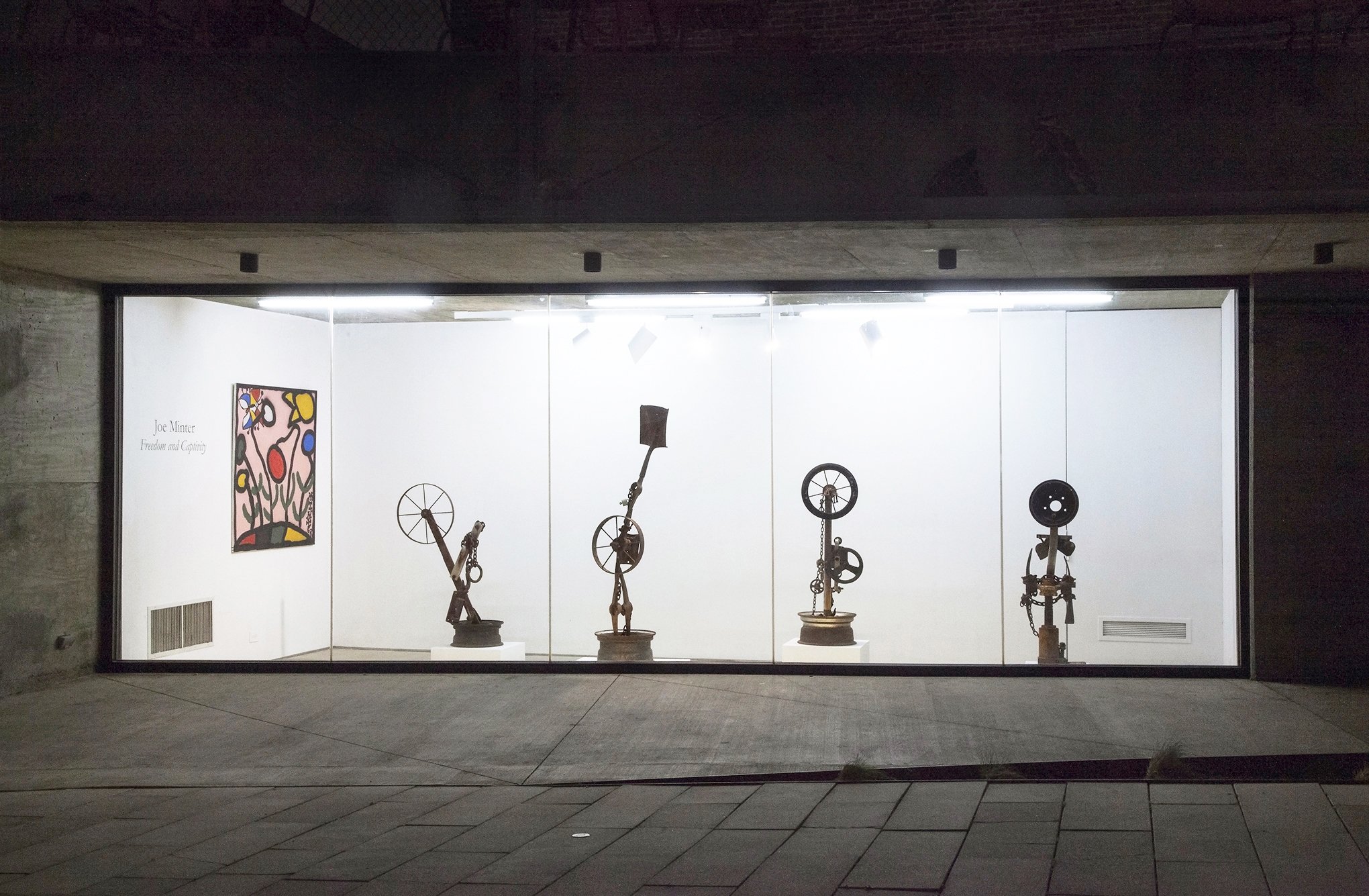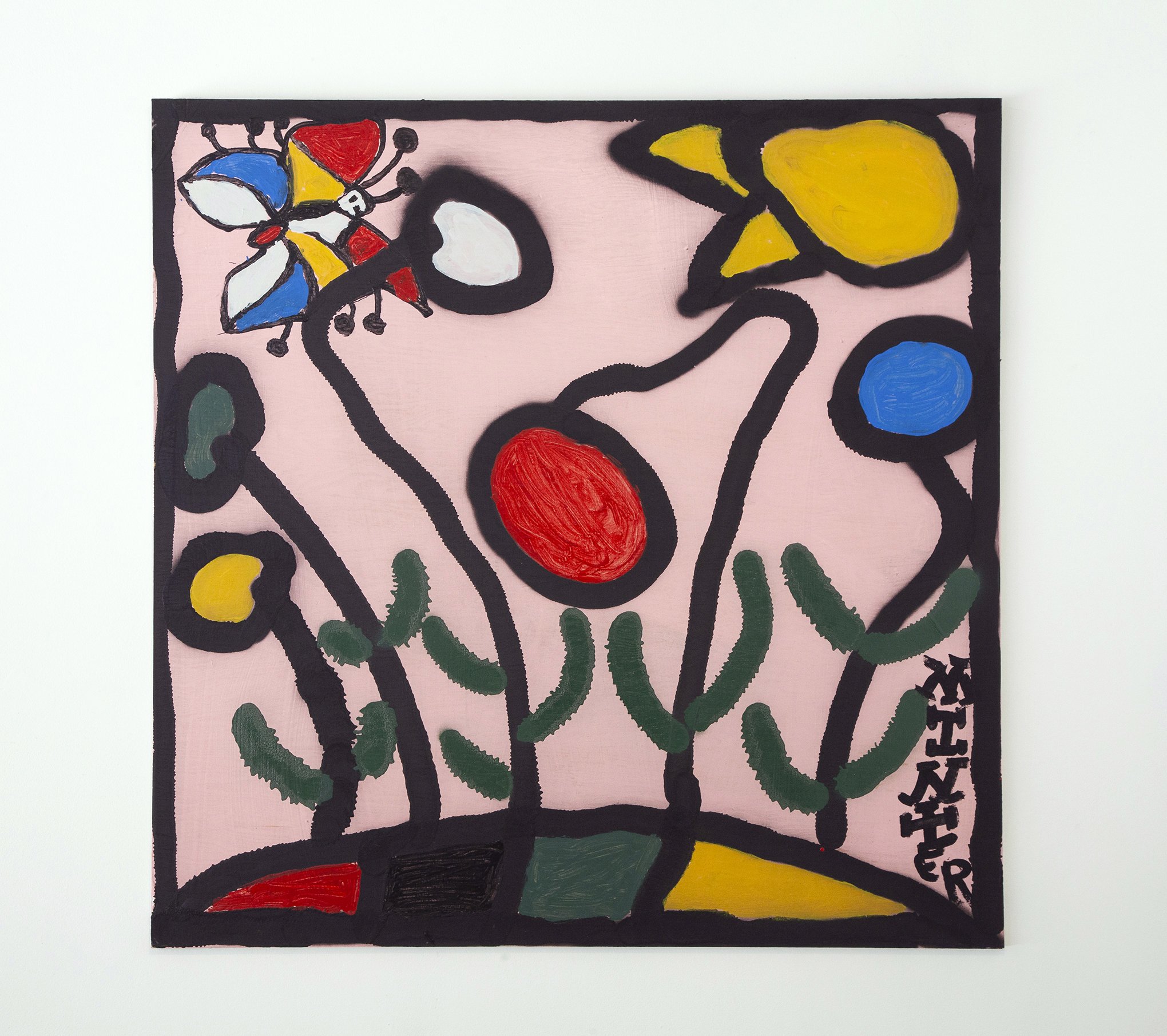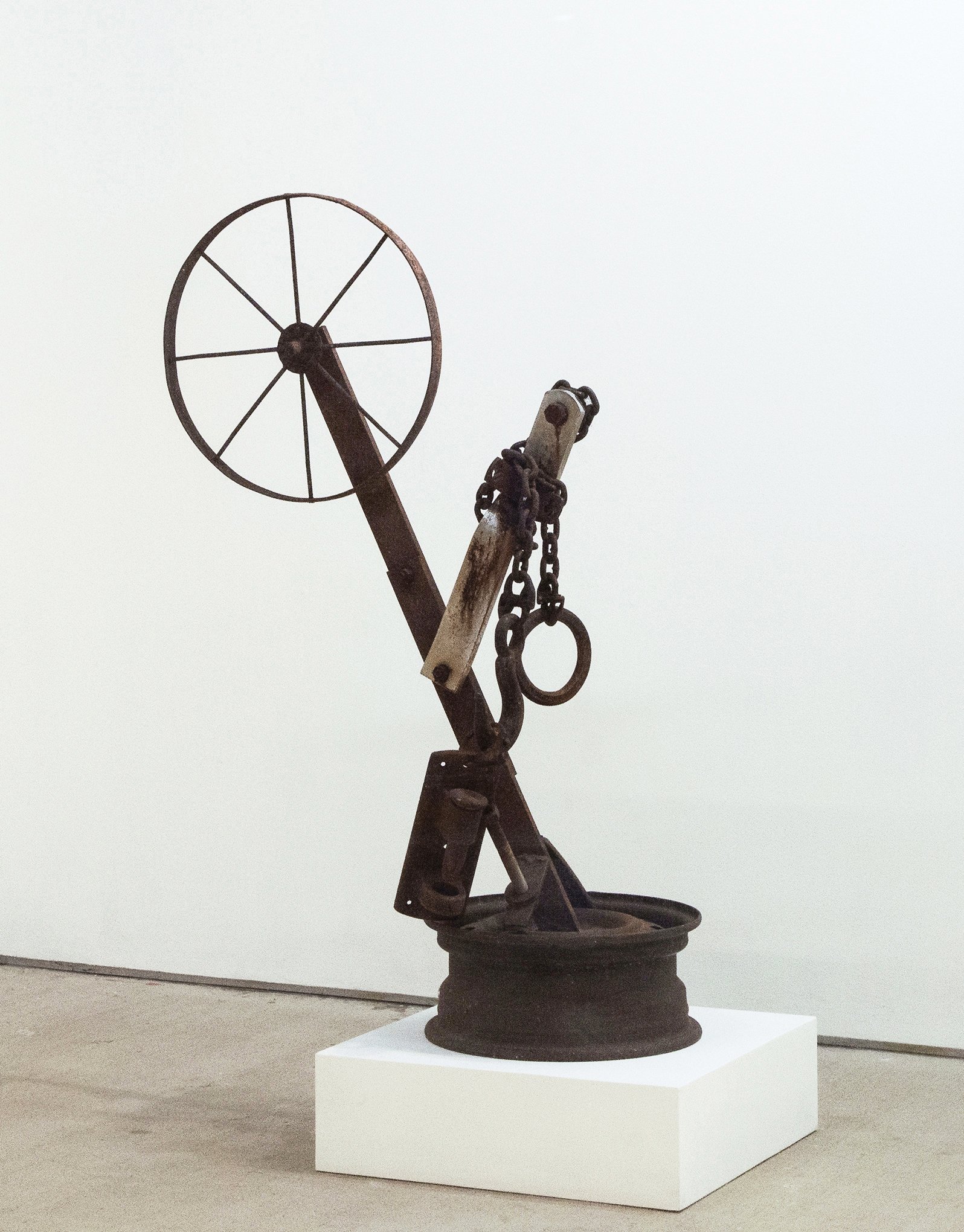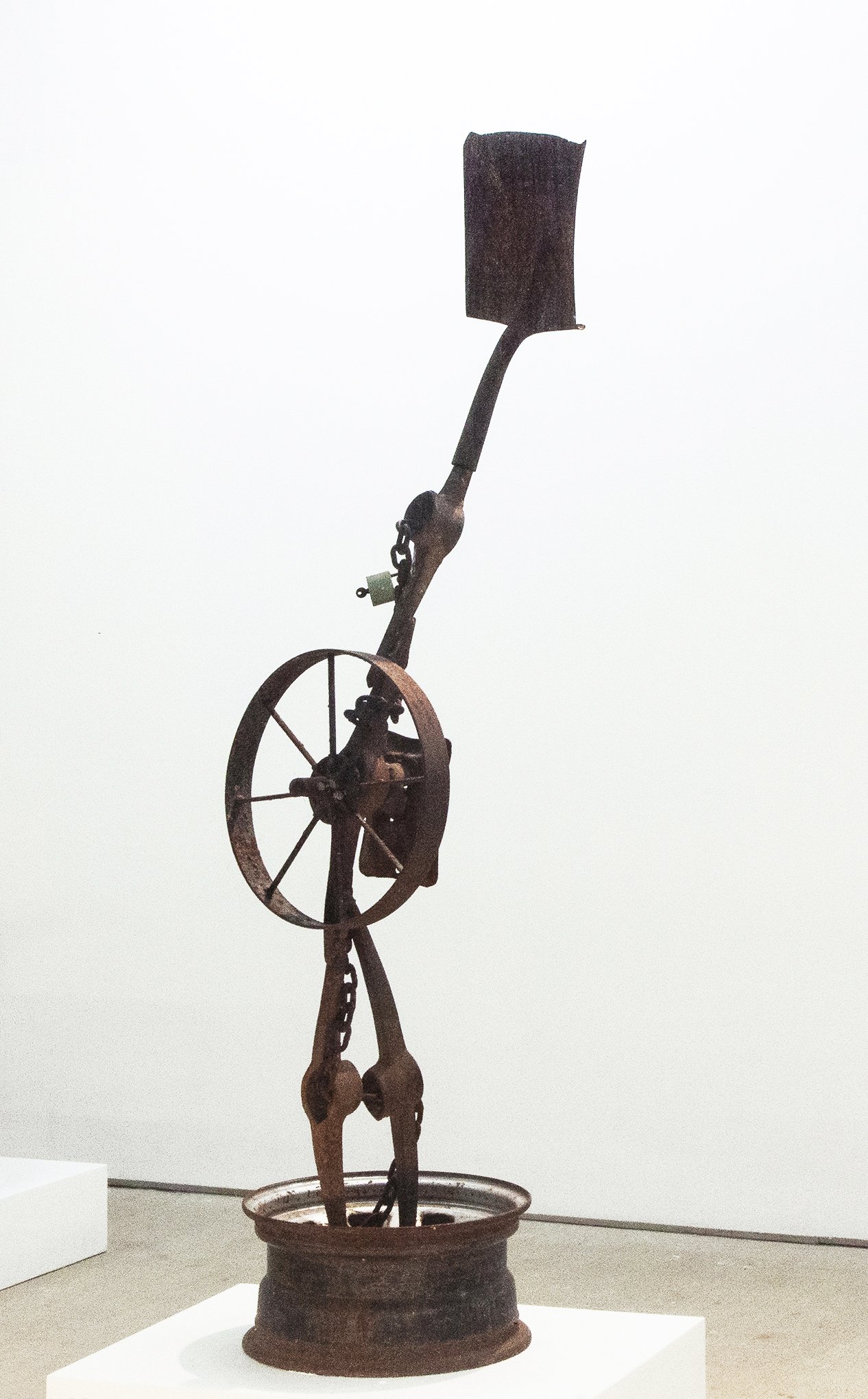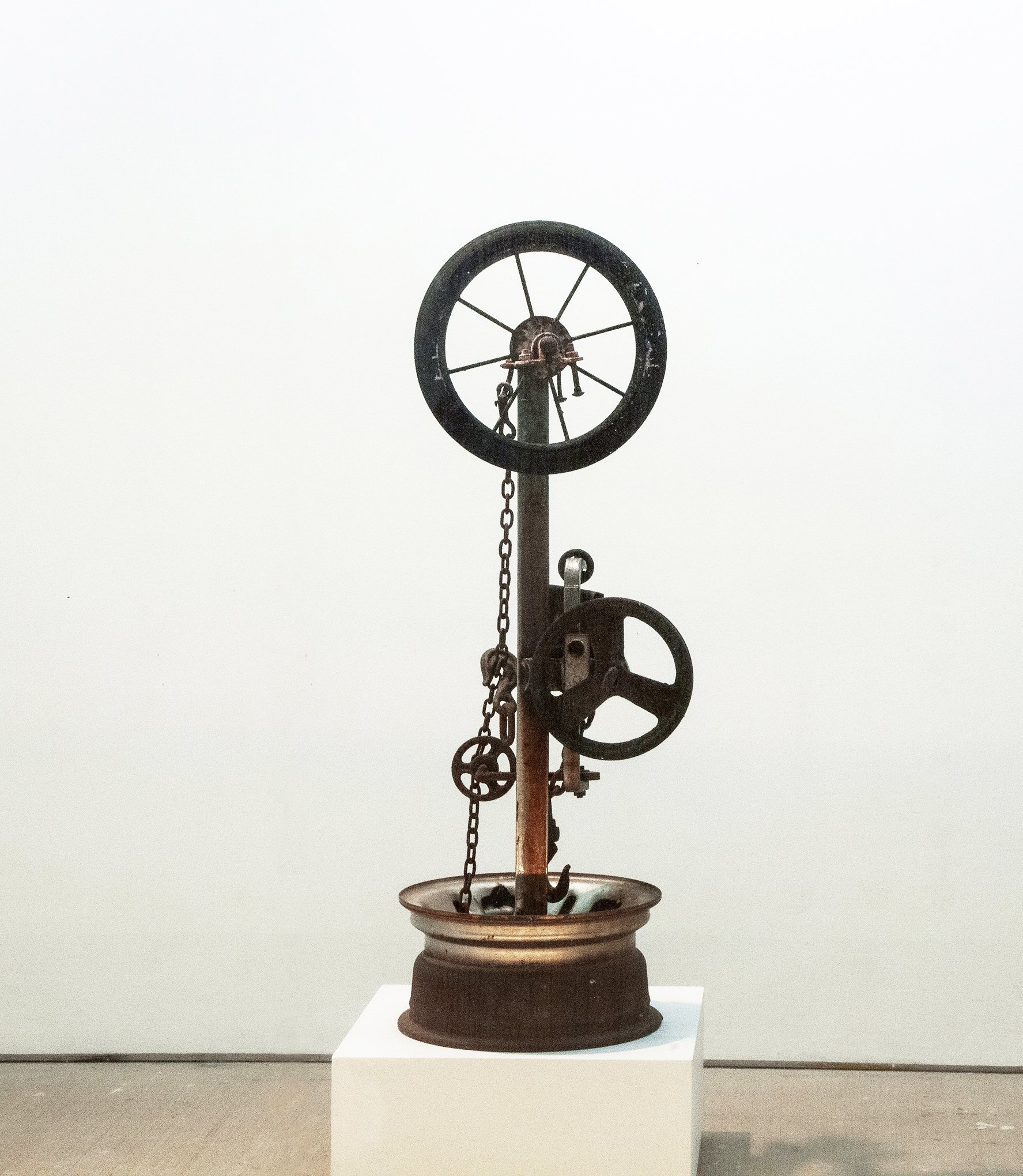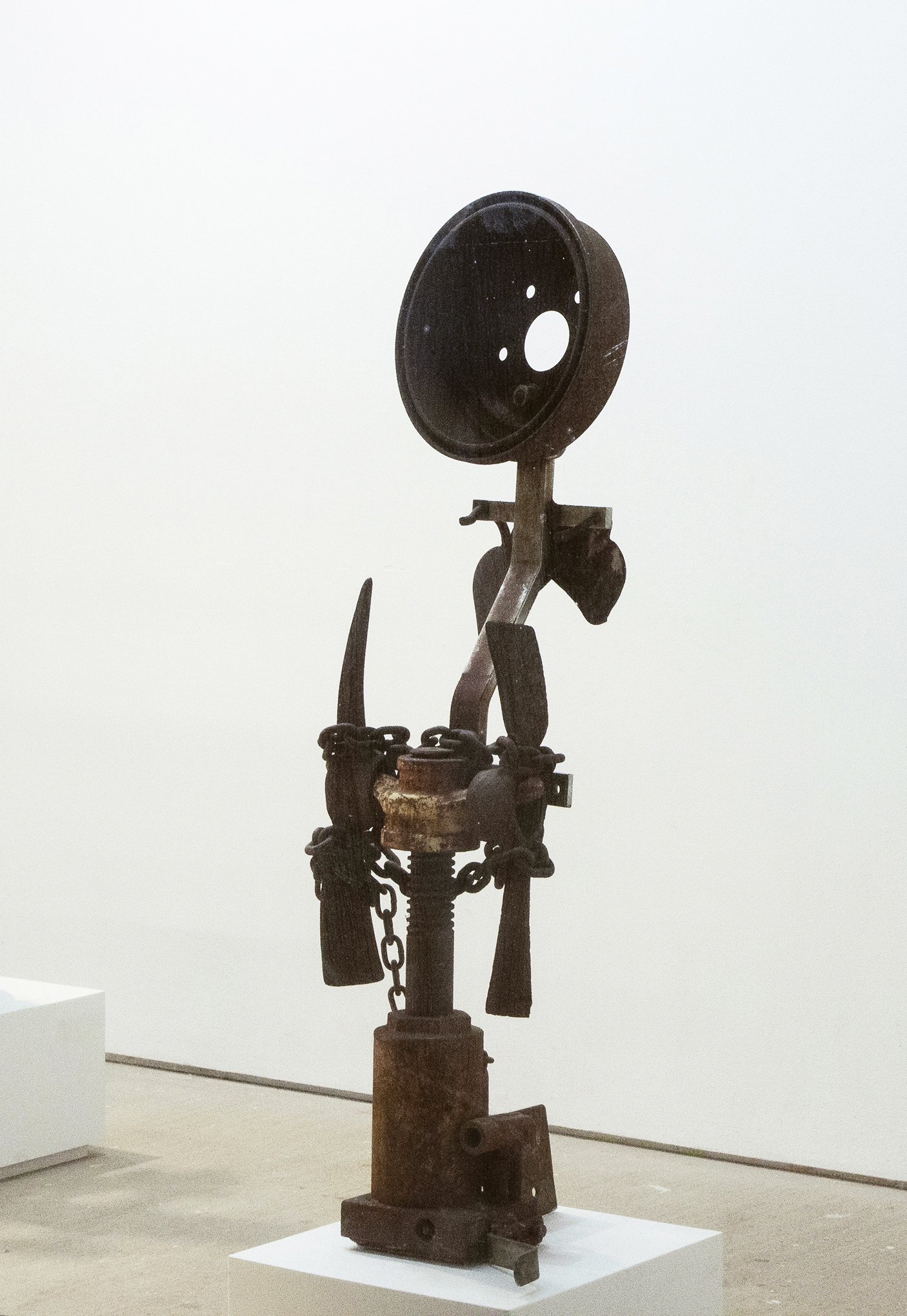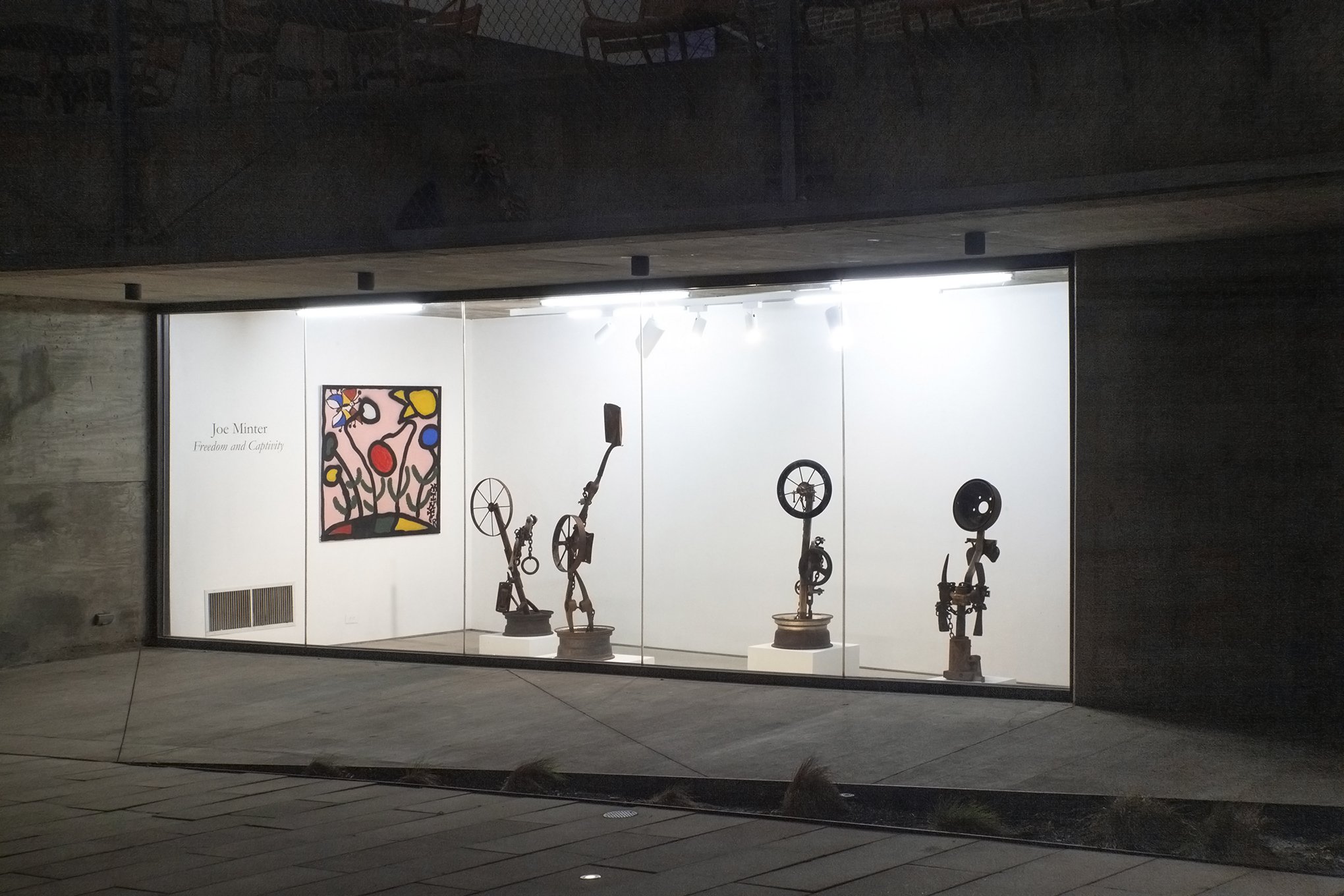Joe Minter
Freedom and Captivity
February 16th - May 15th
"What is freedom? What is captivity? Two opposites. To know what freedom is, is to be free. To know freedom is to know, understand, and feel the air. Man has always wanted to look to the air but he could not fly. For two centuries man has killed himself trying to fly. And he did it, so what is freedom, and what is captivity?"
—Joe Minter
Titled after a sculptural work of the same name, Freedom and Captivity presents five works by Joe Minter at Tops Gallery’s Madison Avenue Park space, creating a 24/7 meditation on true freedom. Anchored by Minter’s recent painting, Butterfly at Work, the installation uses the larger metaphor of the garden as a place to grow, debate, and bring forth creative solutions to larger societal and existential questions.
Minter’s sculptures, installed at ground level, are made using the literal tools of labor: shovels, pickaxes, wheels, and chains. These implements are essential to construction but also to enslavement or oppressive work. Minter’s sculptures, including The Tools of the Laborer, directly engage both materiality and the historical legacy of the African American experience.
This exhibition is organized by Tops Gallery in collaboration with MARCH.
Joe Minter is an artist and cultural historian living in the Titusville neighborhood of Birmingham, AL surrounded by his magnum opus, a sprawling didactic artwork that he has dubbed the African Village in America. In recent years, his work has been the subject of solo exhibitions at the Atlanta Contemporary, James Fuentes Gallery and March Gallery. Minter’s works are in the permanent collections of the Metropolitan Museum of Art, New York, NY; the National Gallery of Art, Washington, D.C; The Studio Museum in Harlem, New York NY; the Whitney Museum of American Art, New York, NY, and the High Museum of Art, Atlanta, GA among others. Minter’s work was featured in the 2019 Whitney Biennial, and is currently on view in the exhibition Called to Create: Black Artists of the American South at the National Gallery.
